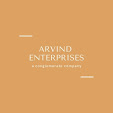📈 Data-Driven Sales: Using Analytics to Identify Your Most Profitable Customers and Upsell Effectively
In today’s digital era, data isn’t just an asset — it’s a strategic advantage.
Research by McKinsey shows that companies who use data to make decisions are 23 times more likely to acquire new customers, 6 times as likely to retain them, and 19 times more likely to be profitable.
One of the most powerful ways to apply this is in sales: finding your most profitable customers and designing personalized upselling strategies to boost revenue. Let’s see how.
🔍 Step 1: Collect and Organize Customer Data
To be truly data-driven, start by consolidating all customer-related data into one central system, like a CRM (Customer Relationship Management) tool.
Data to collect:
- Purchase history (products, frequency, volume)
- Demographics (age, location, gender, profession)
- Engagement data (website visits, email opens, social media interactions)
- Customer service interactions and feedback
The goal: build a 360-degree view of each customer.
📊 Step 2: Identify Your Most Profitable Customer Segments
Once data is organized, analyze it to discover which customers are the most valuable.
Key metrics to calculate:
✅ Customer Lifetime Value (CLV):
The total revenue you expect from a customer over the entire relationship.
✅ Average Order Value (AOV):
The average amount a customer spends per purchase.
✅ Frequency:
How often do they buy? Do they buy seasonally, monthly, or weekly?
For example, you may find that customers aged 28–40 in metro cities buy 35% more frequently and spend 50% more per order than the average customer.
Tip: Many CRMs and tools like Google Analytics or HubSpot can automate these insights.
📦 Step 3: Segment Customers for Better Targeting
After identifying top segments, create customer personas, such as:
- "Frequent Buyers": Shop multiple times a month.
- "High Spenders": Spend more per order.
- "Seasonal Shoppers": Shop mainly during festivals or sales.
Segmentation helps you create tailored offers and messages that speak directly to each group's behavior.
🔁 Step 4: Design Personalized Upselling and Cross-Selling Strategies
Once you know who your most profitable customers are, the next step is increasing their value through upselling and cross-selling.
Upselling: Encouraging them to buy a more premium version or upgrade.
Cross-selling: Recommending related products.
📌 Examples:
- For high spenders: Offer exclusive bundles or limited-edition items.
- For frequent buyers: Loyalty programs with points and special discounts.
- For seasonal shoppers: Early access to sales and festival offers.
According to a study by Invesp, upselling can increase revenue by 10–30%, and cross-selling drives 20% of e-commerce revenue.
📧 Step 5: Automate and Personalize Communication
Use your data to automate personalized emails, SMS, or app notifications.
For example:
- Send an upgrade offer to someone who bought an entry-level product 6 months ago.
- Recommend complementary products based on previous purchases.
- Share special birthday discounts or personalized gift suggestions.
Personalized campaigns see transaction rates 6 times higher than generic messages (source: Experian).
🔁 Step 6: Measure and Optimize Continuously
Data-driven selling is not a one-time process.
Track your campaigns and measure:
- Conversion rates from upselling/cross-selling offers
- Increase in CLV and repeat purchase rates
- Customer feedback and satisfaction
Use these insights to refine your strategies further.
📍 Real-World Example: Amazon
Amazon is the classic example of data-driven upselling and cross-selling:
- Recommends products under “Frequently Bought Together”
- Shows “Customers Who Bought This Item Also Bought”
- Uses your browsing history to send personalized deals
It’s estimated that 35% of Amazon’s revenue comes from such personalized recommendations.
✅ Key Takeaways
- Start with organized, accurate customer data.
- Identify and segment your most profitable customers.
- Create tailored upselling and cross-selling strategies.
- Use automation to personalize offers at scale.
- Measure results and keep optimizing.
By applying these data-driven techniques, businesses can increase revenue sustainably, improve customer loyalty, and create a competitive edge in any industry.












0 Comments